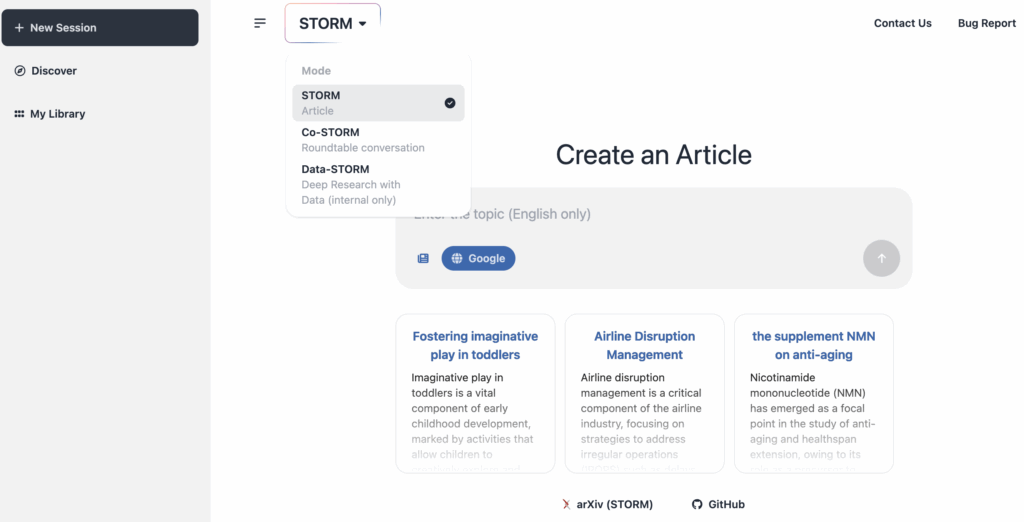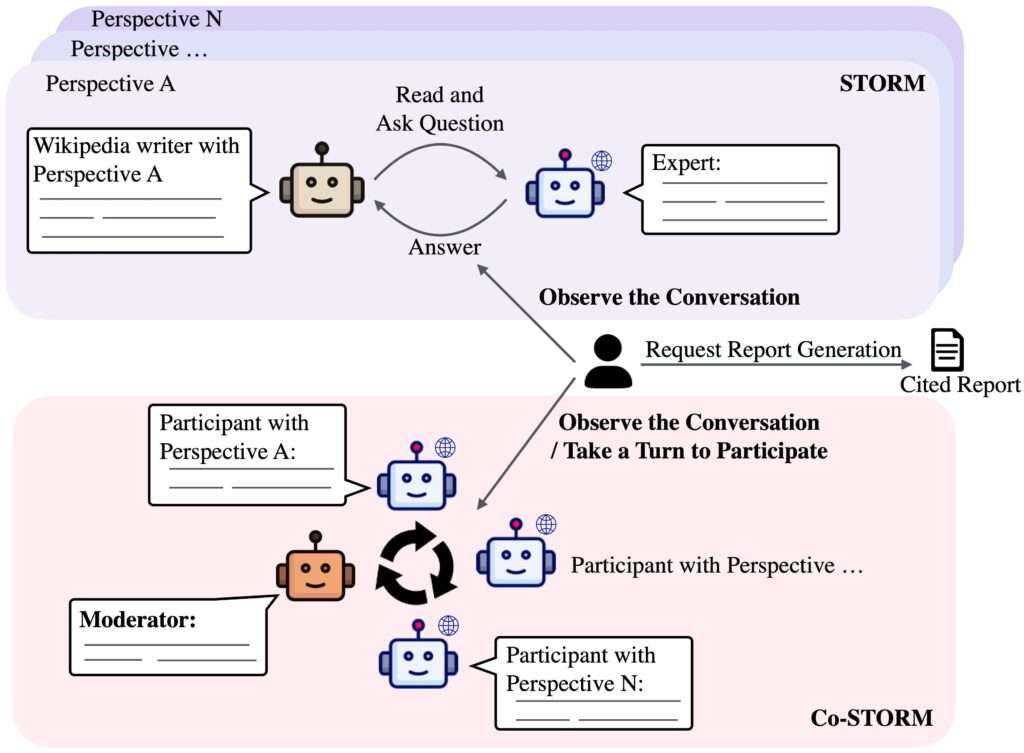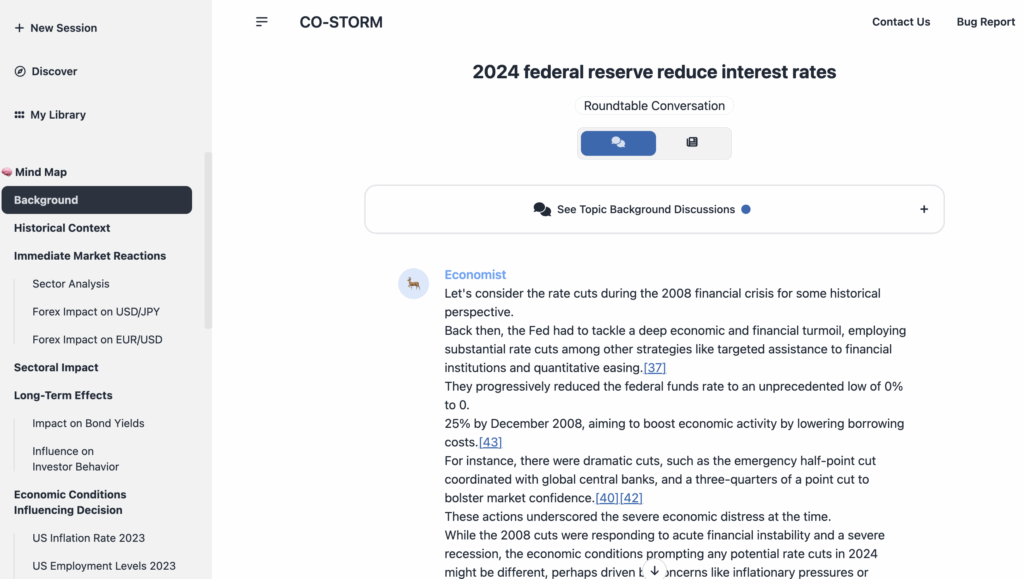STORM is a research-focused AI tool developed by Stanford University’s OVAL Lab. But it doesn’t stop there—STORM is now a full suite that includes STORM, Co-STORM, and Data-STORM, each built to elevate how professionals interact with knowledge.

What is STORM?
STORM (short for Synthesis of Topic Outlines through Retrieval and Multi-perspective Question Asking) is a web-based, AI-powered tool from Stanford that synthesizes well-researched, citation-rich articles on any topic you throw at it. Think of it as your AI analyst that not only gives you answers but shows its work—with sources, structure, and multi-angle insights.
Unlike typical chatbots, STORM is designed to produce structured, Wikipedia-like articles, backed by reputable citations. It simulates a conversation between AI agents—each with its own perspective on the topic. The result? Balanced, transparent, and traceable content.
But that’s just the beginning.
STORM, Co-STORM & Data-STORM Explained
Here’s a quick look at the trio of models:
1. STORM
The core research engine. Input a topic, get a structured article with references. Ideal for market intelligence, competitor analysis, and GTM enablement.
2. Co-STORM
This is collaboration in action. Co-STORM allows multi-user, real-time conversations with the AI. You can guide the research process, add new questions on the fly, and bring your team into the loop. Think of it as whiteboarding meets intelligent research.
3. Data-STORM
Need to back up your research with private or proprietary data? Data-STORM lets you upload your own documents—whitepapers, reports, internal briefs—and generates synthesized content based on that context. Your own data becomes the fuel for deep insights.

Image Source: https://storm.genie.stanford.edu/
Together, these tools cover the full spectrum of sales research—from public intelligence to collaborative ideation to proprietary knowledge mining.
Get Started With STORM
- Visit storm.genie.stanford.edu.
- Sign in with a Google account.
- Pick the appropriate tool (STORM, Co-STORM, or Data-STORM).
- Enter a topic or drop in a document.
- Get back structured content with live citations, bibliography, and even an agent-level “brainstorming” view of how it was built.
STORM vs CHATGPT
| Feature | STORM | CHATGPT |
|---|---|---|
| Output Style | Structured, multi-perspective articles | Conversational |
| Source Citations | Yes, every claim traceable | Sometimes, often unverifiable |
| Collaboration | Real-time (Co-STORM) | Single-user chat |
| Custom Data Integration | Yes (via Data-STORM) | With API + prompt engineering |
| Transparency | Full (agent logs + citations) | Opaque reasoning |
Few STORM Use Cases
- Generate quick, reliable insights on markets and competitors with citations.
- Create persuasive sales collateral backed by structured research.
- Collaborate with teammates in real time to shape deal strategies.
- Analyze internal documents to extract tailored client insights.
- Produce thought leadership and enablement content effortlessly.

Give it a try-and experience the future of AI-powered research today.




